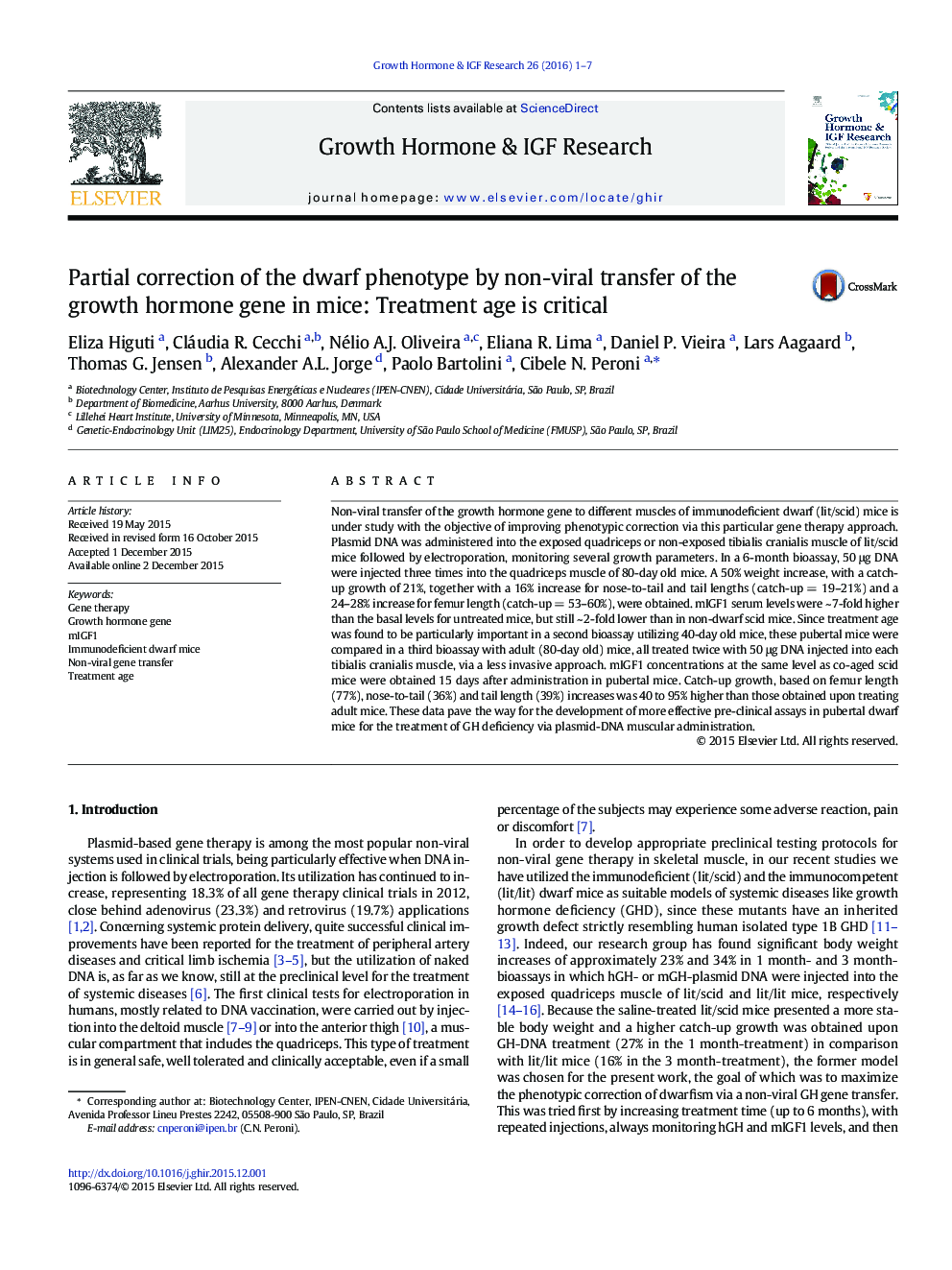| Article ID | Journal | Published Year | Pages | File Type |
|---|---|---|---|---|
| 5901799 | Growth Hormone & IGF Research | 2016 | 7 Pages |
Abstract
Non-viral transfer of the growth hormone gene to different muscles of immunodeficient dwarf (lit/scid) mice is under study with the objective of improving phenotypic correction via this particular gene therapy approach. Plasmid DNA was administered into the exposed quadriceps or non-exposed tibialis cranialis muscle of lit/scid mice followed by electroporation, monitoring several growth parameters. In a 6-month bioassay, 50 μg DNA were injected three times into the quadriceps muscle of 80-day old mice. A 50% weight increase, with a catch-up growth of 21%, together with a 16% increase for nose-to-tail and tail lengths (catch-up = 19-21%) and a 24-28% increase for femur length (catch-up = 53-60%), were obtained. mIGF1 serum levels were ~ 7-fold higher than the basal levels for untreated mice, but still ~ 2-fold lower than in non-dwarf scid mice. Since treatment age was found to be particularly important in a second bioassay utilizing 40-day old mice, these pubertal mice were compared in a third bioassay with adult (80-day old) mice, all treated twice with 50 μg DNA injected into each tibialis cranialis muscle, via a less invasive approach. mIGF1 concentrations at the same level as co-aged scid mice were obtained 15 days after administration in pubertal mice. Catch-up growth, based on femur length (77%), nose-to-tail (36%) and tail length (39%) increases was 40 to 95% higher than those obtained upon treating adult mice. These data pave the way for the development of more effective pre-clinical assays in pubertal dwarf mice for the treatment of GH deficiency via plasmid-DNA muscular administration.
Related Topics
Life Sciences
Biochemistry, Genetics and Molecular Biology
Endocrinology
Authors
Eliza Higuti, Cláudia R. Cecchi, Nélio A.J. Oliveira, Eliana R. Lima, Daniel P. Vieira, Lars Aagaard, Thomas G. Jensen, Alexander A.L. Jorge, Paolo Bartolini, Cibele N. Peroni,
